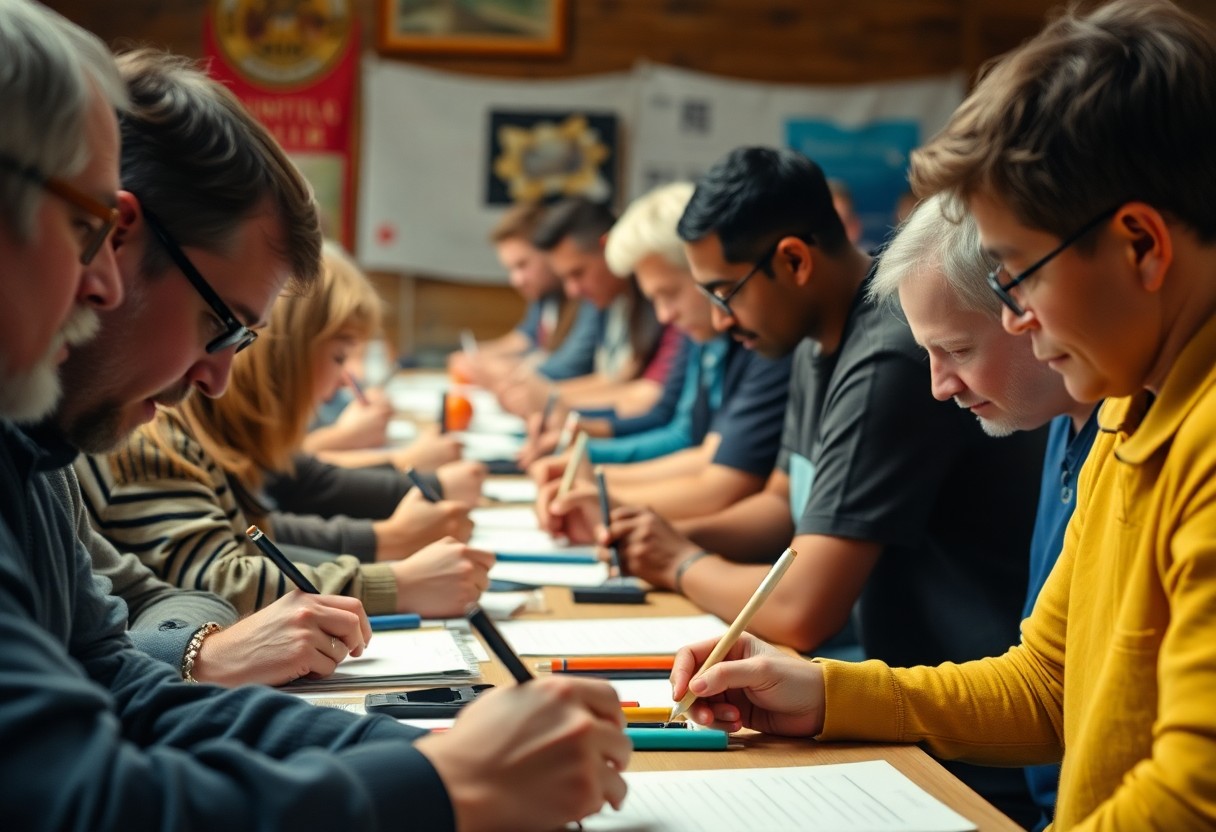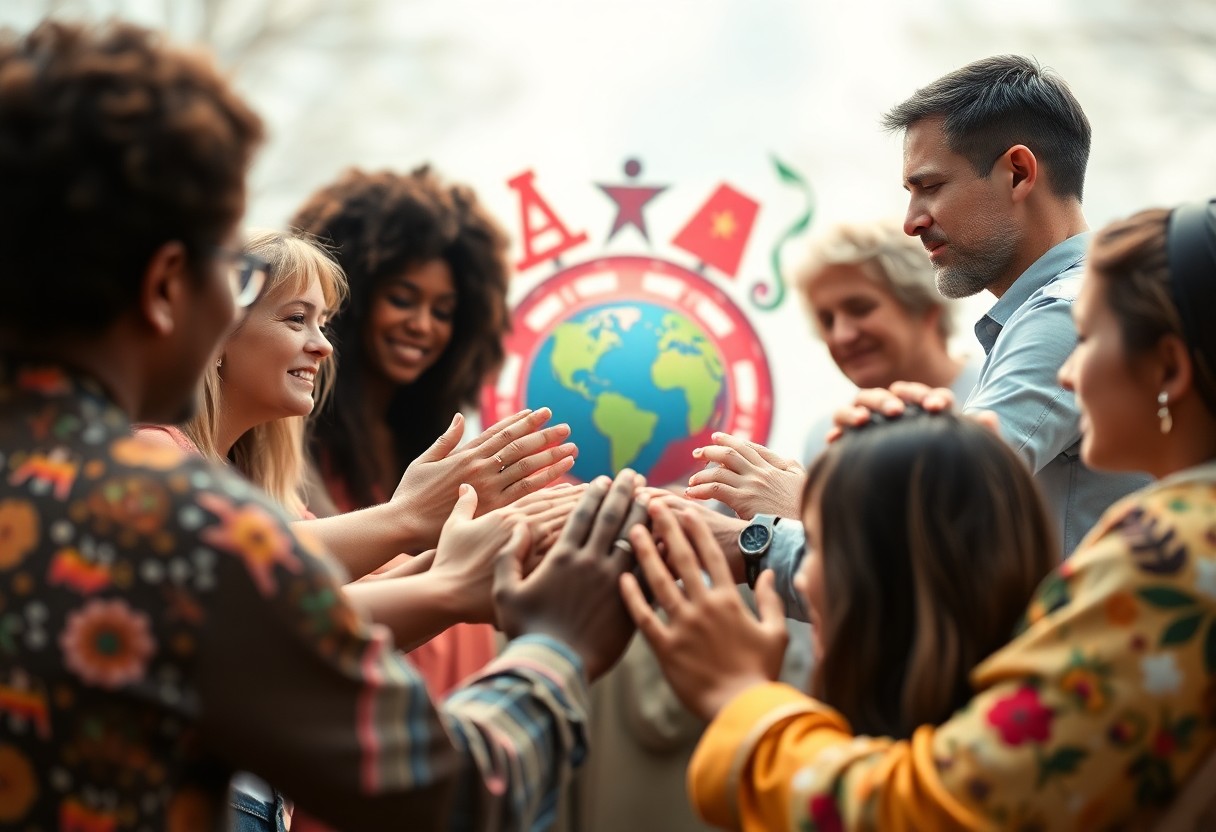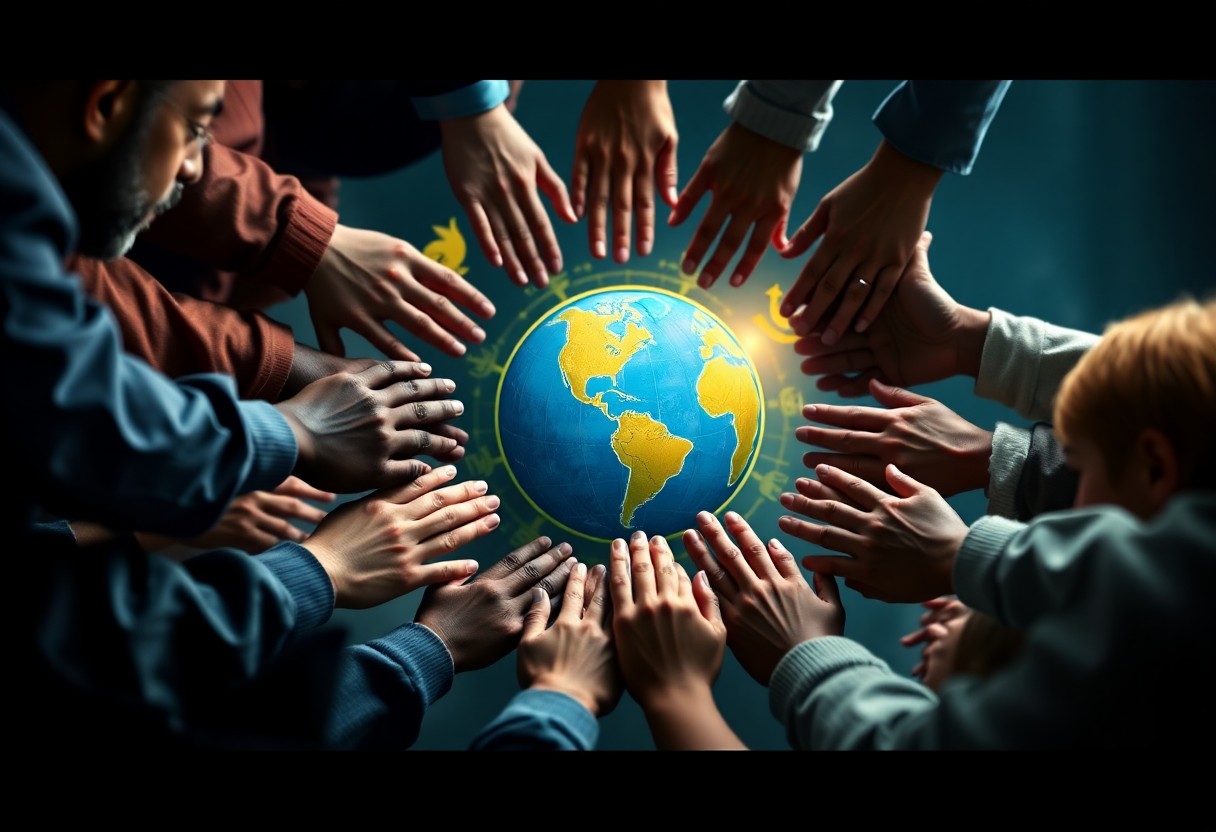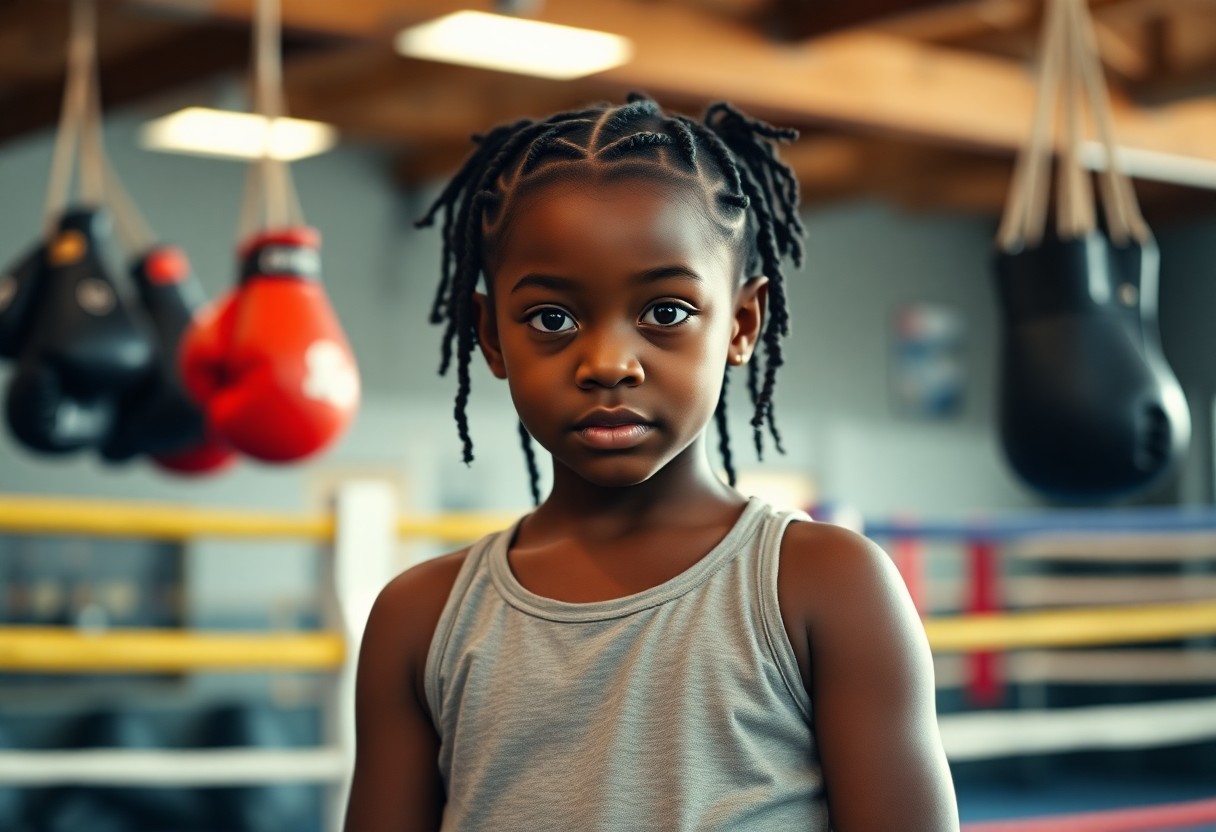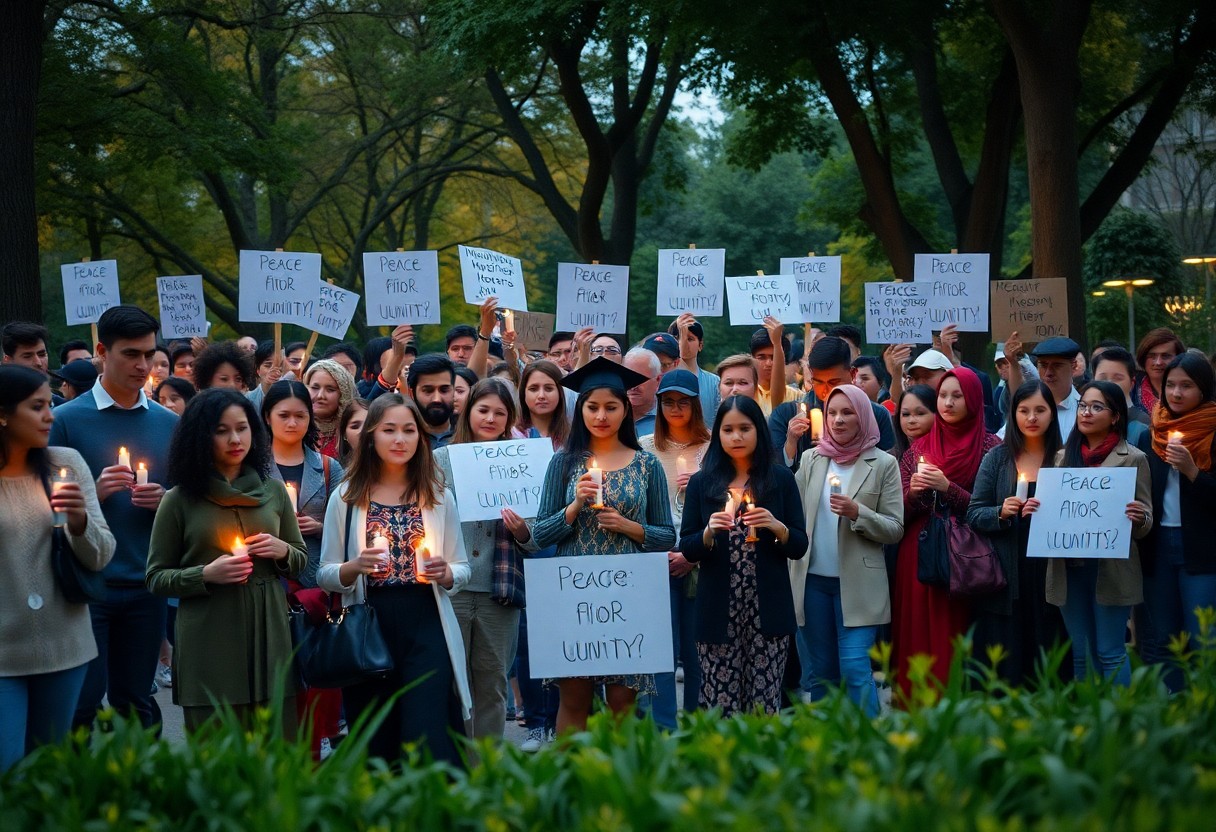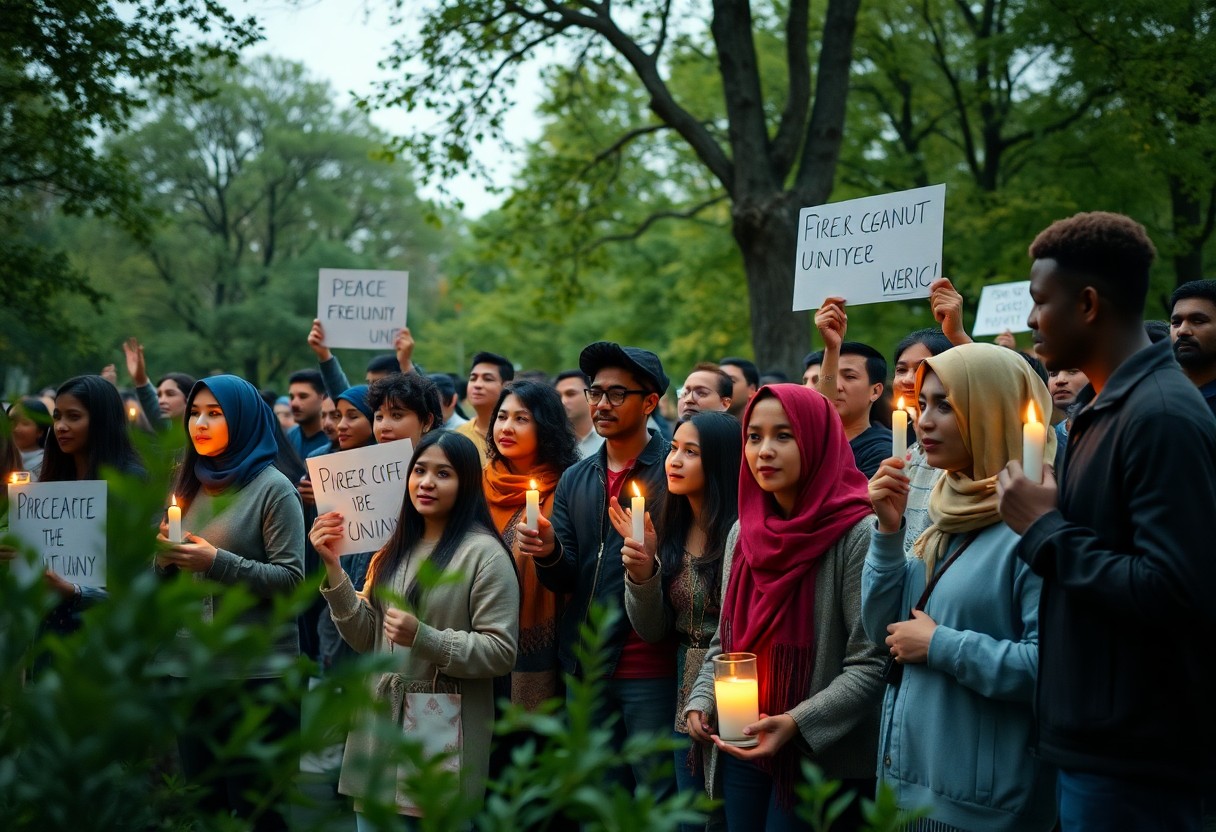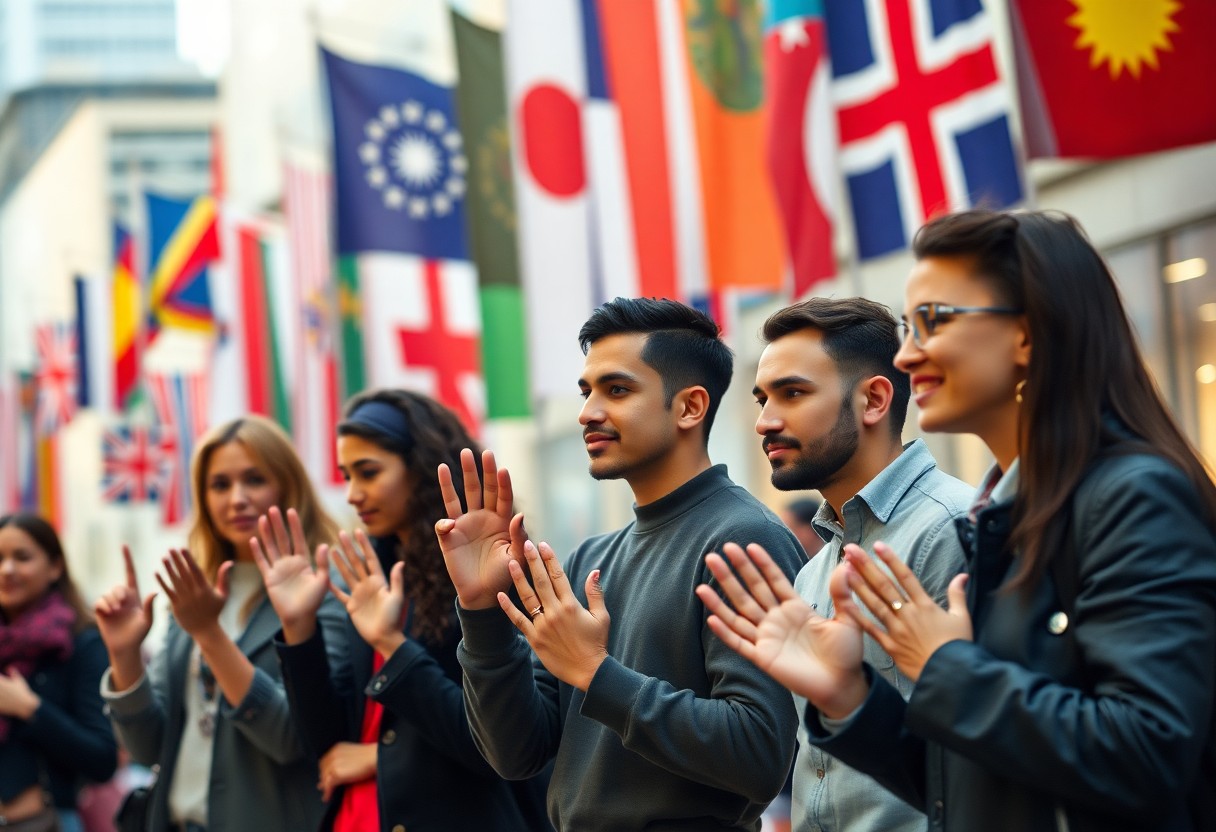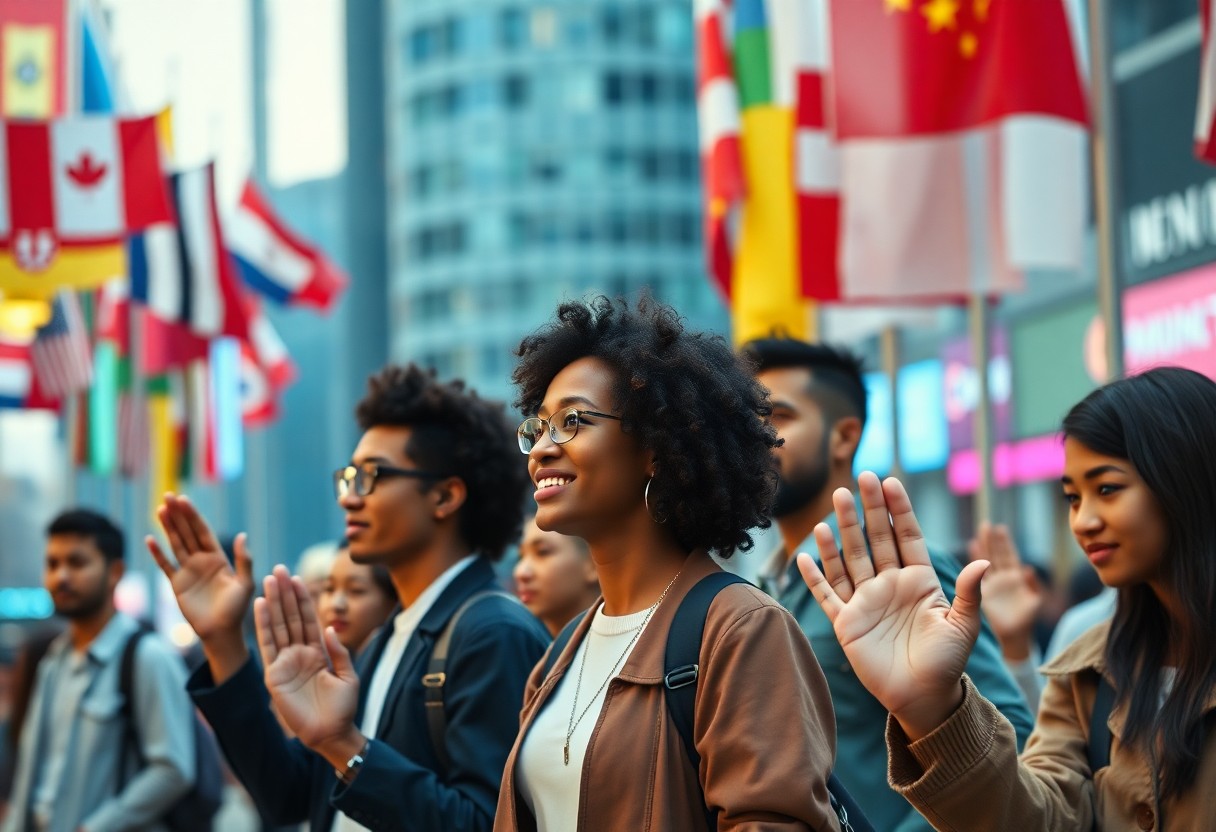As you celebrate unique qualities, you’ll be interested to know that August 13th is dedicated to left-handed individuals. You might be surprised to learn that 10-13% of the population is left-handed. On this day, you can raise awareness about the challenges left-handers face, such as poorly designed tools and social stigma. By acknowledging these difficulties, you can help promote inclusivity and appreciation for your left-handed friends and family members.
History
While celebrating the International Day of Left Handers, you might wonder about the origins and evolution of this unique day. As you examine into the history of this celebration, you will discover that it is a story of self-acceptance, awareness, and empowerment. You will learn about the challenges left-handed individuals have faced and the progress made towards creating a more inclusive society. The history of the International Day of Left Handers is a fascinating tale that highlights the importance of diversity and acceptance.
Origins of the International Day of Left Handers
Around the 1970s, a growing movement began to emerge, advocating for the rights and needs of left-handed individuals. You will find that this movement was driven by the desire to promote awareness and understanding of the unique challenges faced by left-handed people. As you explore the history of this day, you will discover that it was first observed in 1976 by Dean R. Campbell, an American left-hander who wanted to celebrate the advantages of being left-handed. You will learn that Campbell’s efforts paved the way for future generations of left-handed individuals to embrace their uniqueness and demand equal opportunities.
Around the same time, research began to emerge, highlighting the neurological differences between left-handed and right-handed individuals. You will find that this new understanding of the brain’s structure and function helped to dispel myths and stereotypes surrounding left-handedness. As you continue to explore the origins of the International Day of Left Handers, you will discover that it has become a global celebration, with events and activities taking place in many countries around the world. You will witness the positive impact of this day on left-handed individuals, who are now proud to celebrate their uniqueness.
Around the world, you will find that the International Day of Left Handers has become an important milestone in the struggle for equality and inclusion. You will learn about the efforts made by left-handed organizations and individuals to raise awareness about the challenges faced by left-handed people. As you reflect on the origins of this day, you will appreciate the progress made towards creating a more inclusive society, where left-handed individuals can thrive and reach their full potential. You will understand the importance of celebrating diversity and promoting awareness about the unique needs of left-handed individuals.
Evolution over the Years
Against the backdrop of a rapidly changing world, the International Day of Left Handers has evolved significantly over the years. You will discover that this day has become a platform for left-handed individuals to share their experiences and connect with others who face similar challenges. As you explore the evolution of this day, you will learn about the impact of technology on the lives of left-handed individuals, including the development of left-handed friendly products and resources. You will witness the growth of online communities and social media groups, where left-handed individuals can connect and share their experiences.
Against the odds, the International Day of Left Handers has become a beacon of hope for left-handed individuals around the world. You will find that this day has inspired a new generation of left-handed individuals to embrace their uniqueness and celebrate their differences. As you continue to explore the evolution of this day, you will discover the importance of education and awareness in promoting inclusivity and acceptance. You will learn about the efforts made by educators and organizations to develop left-handed friendly curricula and teaching methods.
Against the backdrop of a growing awareness about the needs of left-handed individuals, the International Day of Left Handers has become a catalyst for positive change. You will witness the impact of this day on society, including the development of left-handed friendly products and services. As you reflect on the evolution of this day, you will appreciate the progress made towards creating a more inclusive and accepting society, where left-handed individuals can thrive and reach their full potential. You will understand the importance of continuing to promote awareness and celebrate the uniqueness of left-handed individuals.
Even as you celebrate the successes of the International Day of Left Handers, you will acknowledge the challenges that still exist. You will learn about the ongoing struggles faced by left-handed individuals, including discrimination and stereotyping. As you look to the future, you will understand the importance of continuing to promote awareness and celebrate the uniqueness of left-handed individuals. You will recognize the need for ongoing education and advocacy to create a more inclusive and accepting society, where left-handed individuals can thrive and reach their full potential, and where everyone can celebrate their unique qualities and contribute to a more diverse and vibrant world, with increased awareness of the importance of left-handedness, and reduced stigma surrounding it, ultimately leading to a more harmonious and inclusive society.
Left-Handedness in Society
Some of the most interesting aspects of left-handedness can be observed when you look at how it interacts with the world around you. As you navigate your daily life, you may notice that many everyday objects and systems are designed with right-handed people in mind. This can sometimes make things more difficult for you if you are left-handed, but it also highlights the importance of understanding and accommodating different handedness. You may have experienced this yourself when trying to use a computer mouse or scissors that are designed for right-handed people. In order to get a better understanding of left-handedness, it is helpful to look at the prevalence and demographics of left-handedness, as well as the common traits and characteristics associated with it.
Prevalence and Demographics
Around 10% of the population is left-handed, which means that you are likely to know several left-handed people in your life. As you consider the demographics of left-handedness, you may notice that it seems to be more common in certain families or populations. Research has shown that left-handedness can be genetic, which means that if you have a family history of left-handedness, you are more likely to be left-handed yourself. You may also be interested to know that left-handedness is more common in males than females, although the exact reasons for this are not yet fully understood. As you look at the demographics of left-handedness, you can see that it is a complex and multifaceted trait that is influenced by a variety of factors.
Around the world, you can observe different attitudes towards left-handedness. In some cultures, left-handedness is seen as a positive trait that is associated with creativity and intelligence. In other cultures, however, left-handedness may be viewed as unusual or undesirable. As you consider the different ways that left-handedness is perceived, you can see that it is important to be understanding and accommodating of different handedness. You may have experienced this yourself if you have traveled to a different country or met people from a different cultural background. By being open to different perspectives and experiences, you can help to create a more inclusive and supportive environment for left-handed people.
Around the same time that you are learning about the demographics of left-handedness, you may also be interested in learning about the history of left-handedness. You can learn about the ways that left-handedness has been viewed and treated throughout history, from the negative attitudes of ancient cultures to the more positive and accepting attitudes of modern societies. As you look at the history of left-handedness, you can see that it is a complex and evolving trait that has been influenced by a variety of factors. By understanding the history and demographics of left-handedness, you can gain a deeper appreciation for the diversity and complexity of human experience.
Common Traits and Characteristics
The traits and characteristics associated with left-handedness are fascinating and complex. As you consider the common traits and characteristics of left-handed people, you may notice that they tend to be more creative and artistic. You may have experienced this yourself if you are left-handed and have a talent for art or music. Research has shown that left-handed people are more likely to be drawn to careers in the arts, and that they may have a more developed right hemisphere of the brain. As you look at the common traits and characteristics of left-handed people, you can see that they are a unique and talented group.
The characteristics of left-handed people can also be influenced by the challenges they face in a right-handed world. As you navigate your daily life, you may notice that many everyday objects and systems are designed with right-handed people in mind. This can sometimes make things more difficult for you if you are left-handed, and may require you to be more adaptable and resourceful. You may have experienced this yourself when trying to use a computer mouse or scissors that are designed for right-handed people. By being aware of the challenges faced by left-handed people, you can help to create a more inclusive and supportive environment.
The traits and characteristics of left-handed people can also be influenced by their brain structure and function. As you consider the ways that the brain works, you may be interested to know that left-handed people may have a more developed corpus callosum, which is the part of the brain that connects the two hemispheres. This can allow for more efficient communication between the two hemispheres, and may be one of the reasons why left-handed people tend to be more creative and artistic. As you look at the traits and characteristics of left-handed people, you can see that they are a unique and talented group with a lot to offer.
Further exploration of the common traits and characteristics of left-handed people reveals a complex and multifaceted picture. As you consider the ways that left-handedness interacts with the world around you, you may notice that left-handed people are more likely to be successful in certain fields, such as art, music, and athletics. You may have experienced this yourself if you are left-handed and have a talent for one of these areas. By being aware of the common traits and characteristics of left-handed people, you can help to create a more inclusive and supportive environment that allows them to thrive and reach their full potential. Additionally, you can learn to appreciate the unique perspective and skills that left-handed people bring to the table, and work to create a more inclusive and diverse community that values and celebrates all types of handedness.
Challenges Faced by Left-Handers
It is estimated that around 10% of the population is left-handed, and as a left-hander, you may face a unique set of challenges in your daily life. From simple tasks like using scissors or a computer mouse to more complex activities like playing sports or musical instruments, left-handers often have to adapt to a world designed for right-handers. This can lead to frustration, discomfort, and even social stigma. As you navigate the world, you may find that many everyday objects and systems are designed with right-handers in mind, making it difficult for you to perform tasks with ease.
Everyday Struggles
By living in a world that is predominantly designed for right-handers, you will encounter numerous challenges in your daily life. You may struggle with simple tasks like using a computer keyboard or a mouse, as the layout and design of these devices are often tailored to right-handers. Even something as mundane as opening a door or using a kitchen utensil can become a challenge, as the handles and mechanisms are often designed with right-handers in mind. Furthermore, you may experience difficulty with social interactions, such as shaking hands or giving high-fives, as these gestures are often ingrained in right-handed culture.
By facing these challenges on a daily basis, you may start to feel like you are at a disadvantage. You may struggle to keep up with your right-handed peers in academic or professional settings, where the use of right-handed tools and equipment is prevalent. Even in recreational activities, such as sports or music, you may find that the equipment and instruction are geared towards right-handers, making it harder for you to participate and succeed. This can lead to feelings of isolation and low self-esteem, as you may feel like you don’t fit in or can’t keep up.
By being aware of these challenges, you can take steps to overcome them. You can look for left-handed alternatives to everyday objects, such as left-handed scissors or computer mice. You can also practice and develop your skills in areas where you struggle, such as using your right hand for certain tasks or learning to adapt to right-handed equipment. Additionally, you can seek out support from other left-handers, either online or in-person, to share tips and strategies for navigating a right-handed world.
Adaptation and Resilience
The ability to adapt to a right-handed world is a key characteristic of left-handers. As you navigate the challenges of everyday life, you will develop strategies and techniques to overcome the obstacles that stand in your way. You may learn to use your right hand for certain tasks, or find creative solutions to problems that seem insurmountable. This adaptability will serve you well in all areas of life, as you will be able to think on your feet and come up with innovative solutions to complex problems.
The process of adaptation is not always easy, however. You may face setbacks and failures along the way, as you struggle to find ways to overcome the challenges that you face. But it is in these moments of difficulty that you will discover your greatest strengths. You will learn to persevere and push through challenges, developing a resilience that will serve you well in all areas of life. As you adapt to the world around you, you will become a more confident and capable person, able to tackle any challenge that comes your way.
The benefits of being left-handed are numerous, and as you adapt to the world around you, you will begin to realize your full potential. You will develop a unique perspective on the world, one that is shaped by your experiences as a left-hander. This perspective will allow you to approach problems in a creative and innovative way, often finding solutions that others may have missed. As you navigate the challenges of being left-handed, you will discover that your difference is not a weakness, but a strength that will serve you well in all areas of life.
In fact, the ability to adapt to a right-handed world is a key factor in the success of many left-handers. As you develop strategies and techniques to overcome the challenges that you face, you will become a more resourceful and determined person. You will learn to think outside the box and come up with innovative solutions to complex problems, often finding new and better ways to do things. This adaptability and resilience will serve you well in all areas of life, from your personal relationships to your professional career. By embracing your left-handedness and learning to adapt to a right-handed world, you will unlock your full potential and achieve great things. You will be able to pursue your passions with confidence and success, knowing that your unique perspective and skills will serve you well in all that you do.
Celebrating Left-Handedness
For many years, left-handed individuals have faced unique challenges in a world designed for right-handed people. However, on International Day of Left Handers, you have the opportunity to celebrate your individuality and the distinct advantages that come with being left-handed. As you join in the festivities, you will be part of a global community that is proud to be left-handed. The day is a chance to emphasize the importance of acceptance and inclusion for all individuals, regardless of their handedness.
As you participate in the celebrations, you will discover that being left-handed is not just a quirk, but a unique aspect of your personality. You will also learn about the many famous left-handed individuals who have made significant contributions to various fields, including art, science, and politics. By understanding and appreciating the differences between left-handed and right-handed individuals, you can help create a more inclusive and supportive environment for everyone.
As you celebrate International Day of Left Handers, you will be part of a global movement that aims to promote awareness and acceptance of left-handedness. You will have the opportunity to connect with other left-handed individuals, share personal experiences, and learn from one another. By doing so, you will be contributing to a more harmonious and equitable society, where everyone can thrive and reach their full potential.
International Day of Left Handers Events
By participating in the various events and activities organized on International Day of Left Handers, you can show your support for the left-handed community and help raise awareness about the challenges they face. These events may include left-handed games, competitions, and workshops that cater specifically to the needs and interests of left-handed individuals. As you engage in these activities, you will not only have fun but also learn about the unique advantages of being left-handed and how to overcome the obstacles that come with it.
By attending these events, you will also have the chance to meet and interact with other left-handed individuals, share experiences, and gain insights into the left-handed lifestyle. You may even discover new hobbies or interests that you never knew you had, and develop new skills that will help you in your personal and professional life. As you participate in these events, you will be part of a vibrant and supportive community that celebrates the diversity and individuality of left-handedness.
By joining in the festivities, you will be contributing to a global celebration that promotes awareness and acceptance of left-handedness. You will be part of a united and inclusive community that values diversity and individuality, and strives to create a more equitable and harmonious society for all. As you celebrate International Day of Left Handers, you will be making a positive impact on the lives of left-handed individuals around the world, and helping to create a better future for all.
Promoting Awareness and Acceptance
Internationally, there is a growing recognition of the importance of promoting awareness and acceptance of left-handedness. As you participate in the celebrations, you will be part of a global movement that aims to educate people about the challenges faced by left-handed individuals and the benefits of being left-handed. You will have the opportunity to learn about the latest research on left-handedness, and discover new ways to overcome the obstacles that come with being left-handed.
Internationally, there are many organizations and initiatives that are working to promote awareness and acceptance of left-handedness. As you get involved with these organizations, you will be part of a network of like-minded individuals who are passionate about creating a more inclusive and supportive environment for left-handed people. You will have the opportunity to share your experiences, learn from others, and contribute to the development of new programs and initiatives that support left-handed individuals.
Internationally, the impact of promoting awareness and acceptance of left-handedness cannot be overstated. As you participate in the celebrations, you will be part of a global movement that is changing the way people think about left-handedness. You will be helping to create a more inclusive and supportive environment for left-handed individuals, and empowering them to reach their full potential. By promoting awareness and acceptance of left-handedness, you will be making a positive impact on the lives of left-handed individuals around the world.
Left to their own devices, left-handed individuals have proven themselves to be resilient and resourceful in the face of challenges. However, with the support and acceptance of the wider community, they can thrive and excel in all areas of life. By promoting awareness and acceptance of left-handedness, you can help to create a more inclusive and supportive environment for left-handed individuals, and empower them to reach their full potential. This can have a positive impact on their mental health, self-esteem, and overall well-being, and can help to reduce the stigma and discrimination that left-handed individuals often face.
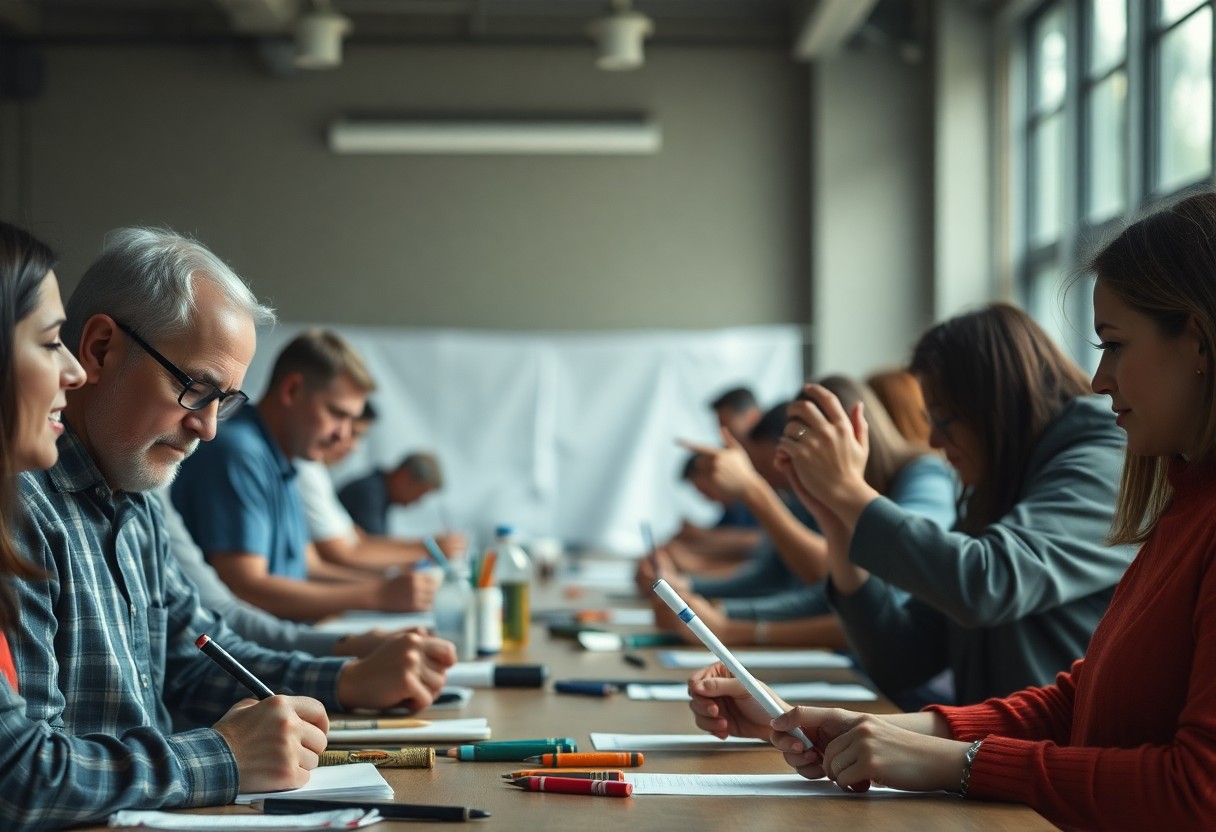
Famous Left-Handers
Many of you may be surprised to learn that some of the most influential and successful individuals in history have been left-handers. As you explore into the world of famous left-handers, you will discover a plethora of talented individuals who have made significant contributions to their respective fields. From renowned artists to exceptional athletes, left-handers have consistently proven that they can achieve greatness despite the challenges they may face in a predominantly right-handed world. As you explore the lives of these individuals, you will gain a deeper understanding of the unique characteristics and traits that have enabled them to succeed.
Historical Figures
LeftHandedly, you will find that many historical figures were known to be left-handed. One such example is Leonardo da Vinci, the polymath who made groundbreaking contributions to art, science, and engineering. Da Vinci’s left-handedness is evident in his mirror writing, which was a common trait among left-handers during the Renaissance period. As you study the lives of other historical figures, such as Napoleon Bonaparte and Albert Einstein, you will notice that they too were left-handers who achieved greatness in their respective fields. You will also discover that left-handers have been known to be more adaptable and creative, traits that have enabled them to thrive in a wide range of environments.
Left-handedness has also been linked to increased intelligence and problem-solving skills, which may explain why many left-handers have excelled in fields such as science, technology, engineering, and mathematics (STEM). As you explore the lives of historical figures like Charles Darwin and Marie Curie, you will see that they too were left-handers who made groundbreaking discoveries that changed the world. You will also notice that left-handers have often been outside-the-box thinkers, unafraid to challenge conventional wisdom and push the boundaries of human knowledge.
Furthermore, you will find that left-handers have been known to be more resilient and resourceful, able to overcome obstacles and achieve their goals despite the challenges they may face. As you study the lives of historical figures like Thomas Edison and Henry Ford, you will see that they too were left-handers who persevered in the face of adversity and achieved great success. You will also discover that left-handers have often been visionary leaders, able to inspire and motivate others to work towards a common goal.
Modern-Day Celebrities
With the rise of modern media, you are now more likely to encounter left-handers in various fields, from entertainment to sports. As you look at the lives of modern-day celebrities, you will notice that many of them are left-handers who have achieved enormous success in their respective fields. For example, actors like Brad Pitt and Angelina Jolie are known to be left-handers, as are musicians like Paul McCartney and Lady Gaga. You will also find that left-handers are overrepresented in certain fields, such as music and art, where creativity and self-expression are highly valued.
With the advent of social media, you can now see that many modern-day celebrities are proud to be left-handers, often celebrating their left-handedness and embracing their uniqueness. As you follow the lives of celebrities like Taylor Swift and Justin Bieber, you will notice that they often use their platforms to raise awareness about left-handedness and support left-handed causes. You will also discover that left-handers are more likely to be open-minded and tolerant, traits that have enabled them to build strong relationships with their fans and colleagues.
With the increasing visibility of left-handers in modern media, you may be surprised to learn that left-handers are still underrepresented in certain fields, such as business and politics. However, as you look at the lives of modern-day left-handers, you will see that they are breaking down barriers and shattering glass ceilings, paving the way for future generations of left-handers to succeed. You will also notice that left-handers are more likely to be entrepreneurial and innovative, traits that have enabled them to create new opportunities and drive economic growth.
For instance, as you explore deeper into the world of modern-day celebrities, you will find that many left-handers are using their platforms to promote left-handed awareness and support left-handed charities. You will also discover that left-handers are more likely to be passionate and dedicated to their craft, traits that have enabled them to achieve great success and win numerous awards. As you continue to explore the lives of famous left-handers, you will gain a deeper understanding of the unique challenges and opportunities that they face, and you will be inspired by their resilience and determination to succeed.
Left-Handedness in Culture
Not surprisingly, left-handedness has been a subject of interest and fascination across various cultures and historical periods. As you investigate into the world of left-handedness, you will discover a myriad of references, representations, and interpretations that reflect the complexities and nuances of this phenomenon. You will find that left-handedness has been viewed as a unique trait that sets individuals apart, often with positive connotations, but also sometimes with negative stereotypes. As you explore the cultural significance of left-handedness, you will encounter a rich tapestry of myths, legends, and artistic expressions that showcase the diversity of human experience.
Mythology and Folklore
Beneath the surface of modern society, you will find that left-handedness has been a subject of fascination and curiosity in mythology and folklore. You will discover that in many ancient cultures, left-handedness was associated with magical powers and special abilities, such as the Celtic belief in the power of the left hand. As you explore these stories and legends, you will notice that left-handedness was often linked to divine or supernatural forces, highlighting the mysterious and unusual nature of this trait. You will also find that in some cultures, left-handedness was seen as a sign of good luck or prosperity, while in others it was viewed as a curse or a sign of bad fortune.
Underneath the layers of mythology and folklore, you will uncover a complex web of symbolism and metaphor that surrounds left-handedness. You will find that the left hand was often associated with the heart and emotions, while the right hand was linked to reason and logic. As you examine these symbolic representations, you will gain insight into the cultural values and beliefs that have shaped our understanding of left-handedness. You will also notice that left-handedness has been used as a metaphor for nonconformity and individuality, highlighting the unique and unconventional nature of this trait.
Beyond mythology and folklore, you will discover that left-handedness has been a subject of scientific interest and study. You will find that researchers have explored the genetic and neurological basis of left-handedness, shedding light on the biological and psychological factors that contribute to this trait. As you examine the findings of these studies, you will gain a deeper understanding of the complexities of left-handedness and its implications for cognition, behavior, and culture. You will also notice that left-handedness has been linked to increased creativity and innovation, highlighting the positive aspects of this trait.
Artistic and Creative Representations
Lowering your gaze to the world of art and literature, you will find that left-handedness has been a fascinating subject for creators and artists. You will discover that many famous artists, such as Leonardo da Vinci and Michelangelo, were left-handed, and that their artistic style and technique were influenced by their handedness. As you explore the works of these artists, you will notice that left-handedness has been used as a theme and motif in art, literature, and music, highlighting the unique and expressive nature of this trait. You will also find that left-handed characters have been portrayed in fiction and film, often as heroes or villains, reflecting the cultural ambivalence towards left-handedness.
Descending into the world of music and dance, you will find that left-handedness has been a source of inspiration for many artists and performers. You will discover that left-handed musicians, such as Paul McCartney and Jimi Hendrix, have revolutionized the music industry with their innovative and experimental styles. As you examine the contributions of these artists, you will notice that left-handedness has been linked to increased creativity and improvisational skills, highlighting the positive aspects of this trait. You will also find that left-handedness has been used as a theme in music and dance, reflecting the cultural significance of this trait.
Looking further into the world of art and literature, you will find that left-handedness has been a persistent theme in creative works. You will discover that left-handed authors, such as Mark Twain and Lewis Carroll, have explored the experiences and challenges of left-handedness in their writings. As you examine the works of these authors, you will notice that left-handedness has been used as a metaphor for individuality and nonconformity, highlighting the unique and expressive nature of this trait. You will also find that left-handedness has been celebrated in art and literature, reflecting the positive and empowering aspects of this trait.
Also, as you continue to explore the artistic and creative representations of left-handedness, you will discover that left-handedness has been used as a symbol of rebellion and nonconformity in film and literature. You will find that left-handed characters are often portrayed as heroes or outcasts, reflecting the cultural ambivalence towards left-handedness. You will notice that left-handedness has been linked to increased creativity and innovation, highlighting the positive aspects of this trait, and that it has been celebrated in art and literature as a unique and expressive aspect of human experience, with many famous left-handed individuals making significant contributions to science, art, and culture, and left-handedness being associated with intelligence, creativity, and success, making it a desirable and admired trait in modern society.
To wrap up
To wrap up, you have now gained a comprehensive understanding of the International Day of Left-Handers, which is celebrated on August 13th every year. You have learned that this day is dedicated to raising awareness about the strengths and challenges faced by left-handed individuals, who make up about 10% of the global population. As you now know, being left-handed can have its advantages, such as increased creativity and improved problem-solving skills, but it can also present unique difficulties, like finding adapted tools and equipment. You may have encountered or heard stories about left-handed individuals who have had to adapt to a world designed primarily for right-handed people, and you can appreciate the importance of promoting inclusivity and acceptance.
As you reflect on the significance of the International Day of Left-Handers, you can consider the ways in which you can contribute to creating a more inclusive environment for left-handed individuals. You can start by being more mindful of the needs of left-handed people in your daily life, such as providing left-handed scissors or computer mice. You can also help raise awareness about the challenges faced by left-handed individuals and promote understanding and acceptance. Moreover, you can learn more about the history and cultural significance of left-handedness, which can help you appreciate the diversity and complexity of human experiences. By doing so, you will not only be supporting left-handed individuals but also contributing to a more inclusive and diverse society.
To sum up, you now have a deeper understanding of the International Day of Left-Handers and its significance in promoting awareness and acceptance of left-handed individuals. You have learned about the strengths and challenges associated with being left-handed and the importance of creating an inclusive environment. As you go about your daily life, you can apply this knowledge to make a positive impact on the lives of left-handed individuals. You can share your newfound understanding with others, help raise awareness, and promote a culture of acceptance and inclusivity. By doing so, you will be contributing to a more compassionate and equitable society, where everyone, regardless of their handedness, can thrive and reach their full potential. Your support and understanding can make a significant difference in the lives of left-handed individuals, and you can take pride in being an ally and advocate for this community.
FAQ
Q: What is the International Day of Left-Handers and when is it celebrated?
A: The International Day of Left-Handers is a global celebration held annually on August 13th to raise awareness about the unique challenges and advantages faced by left-handed individuals in a predominantly right-handed world. It aims to promote equality, understanding, and inclusivity for the left-handed community, highlighting their contributions and achievements.
Q: What are some of the common difficulties that left-handed people face in their daily lives?
A: Left-handed individuals often encounter various obstacles in their everyday activities due to the prevalence of right-handed designs and products. These can include using scissors, computer mice, and desks designed for right-handers, which can lead to discomfort, decreased productivity, and even accidents. Furthermore, left-handers may face social and cultural biases, as many customs and traditions are tailored to right-handedness, requiring them to adapt or find alternative ways to participate.
Q: How can people celebrate and support the International Day of Left-Handers?
A: To celebrate the International Day of Left-Handers, individuals can participate in various activities that promote awareness and appreciation for left-handedness. This can include sharing personal stories and experiences of being left-handed on social media, using hashtags to create a global conversation, and supporting left-handed friends and family members by adapting activities and environments to be more inclusive. Additionally, people can engage in fundraising efforts for organizations that advocate for left-handed awareness and provide resources for left-handed individuals, helping to create a more accommodating and supportive world for all.
![]()
